Special Feature: Products Sally Recommends
Gourmet Getaways
After years of sampling international cuisine, Americans have become quite sophisticated in what they eat—and, as a result, they are beginning to seek exotic flavors with almost frantic zeal. To satisfy this new American palate, recreational cooking programs are popping up everywhere.
Mesmerized by the promise of becoming top chefs, students eager to learn from the pros are grabbing their aprons and racing off to cooking classes in record numbers. And food enthusiasts wanting to take their dishes to the next level are using travel getaways as a chance to learn from the very best.
What is hot and popular today is often déclassé tomorrow. Although certain international cuisines like Italian and French are always in vogue, the way these foods are prepared is constantly changing. Those heavy French sauces, for example, long adored by gourmands, have been washed down the drain.
The new rage is eating healthy, lightening classic dishes by using techniques like making reduction sauces (usually from meat juices). And introducing exotic flavors from around the world, which everyone has come to love, into almost everything—from salads to entrées—with imagination and skill.
Since food fads come and go, you might want to consider focusing your training on mastering universal skills and techniques, which, regardless of the trends, will always have value in the kitchen.
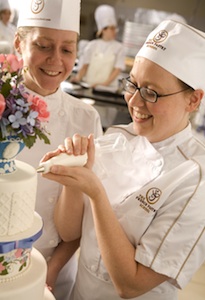 At the French Pastry School in Chicago, for example, students learn to approach cooking as professionals. The staff of talented pastry chefs—including two international stars, Jacquy Pfeiffer and Sébastien Canonne—believe one way to develop serious cooks is by training students to perform repetitiously the best techniques. Pfeiffer encourages his students to “strive continuously to refine their skill by trying over and over again to outdo what they’ve already done, until they have reached their highest level of excellence.” The end result will be a pastry cook who can design something with taste and beauty, suitable for a gala dinner.
At the French Pastry School in Chicago, for example, students learn to approach cooking as professionals. The staff of talented pastry chefs—including two international stars, Jacquy Pfeiffer and Sébastien Canonne—believe one way to develop serious cooks is by training students to perform repetitiously the best techniques. Pfeiffer encourages his students to “strive continuously to refine their skill by trying over and over again to outdo what they’ve already done, until they have reached their highest level of excellence.” The end result will be a pastry cook who can design something with taste and beauty, suitable for a gala dinner.
Canonne, a recipient of the Meilleur Ouvrier de France award, France’s highest honor for artisans, believes such success is quite possible, “if a student shows respect for his creation…by always using the best ingredients and his most polished skills to turn his confection into something lofty.”
But using the best ingredients and polishing them to perfection through practice isn’t enough. There is another requirement to successful pastry making. A student must learn to layer flavors in proper balance to bring about a compatible taste interaction. Upon completion, the dessert must be “a total sensory experience, engaging not only your sense of taste, but also your sense of sight, smell, touch and sound (through texture),” Canonne says.
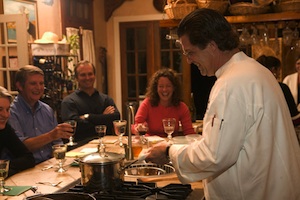 Frank Brigtsen, who teaches regularly at the New Orleans Cooking Experience, says that building meals one ingredient at a time is fundamental to creating a rich taste that makes good food so special.
Frank Brigtsen, who teaches regularly at the New Orleans Cooking Experience, says that building meals one ingredient at a time is fundamental to creating a rich taste that makes good food so special.
This former student and longtime friend of the famous New Orleans chef Paul Prudhomme believes the real test of a meal is how it tastes—and creating good taste means building deep flavors through careful attention to each step of the preparation.
“One of the tricks is to maximize the special flavor of each ingredient through separate preparation (like sautéing onions first) before introducing it to the other ingredients,” he says.
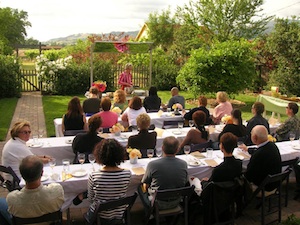 The key to good cooking is keeping food flavorful and exciting without the addition of the chemicals and additives so many home cooks have come to rely upon. Achieving this requires using fresh ingredients—ideally in-season and organic—acquired directly from the producers. Nowhere is this ethos as prevalent as it is in California, especially at the Relish Culinary Adventure in Sonoma County, an hour and a half north of San Francisco.
The key to good cooking is keeping food flavorful and exciting without the addition of the chemicals and additives so many home cooks have come to rely upon. Achieving this requires using fresh ingredients—ideally in-season and organic—acquired directly from the producers. Nowhere is this ethos as prevalent as it is in California, especially at the Relish Culinary Adventure in Sonoma County, an hour and a half north of San Francisco.
As many foodies already know, the Sonoma-Napa area isn’t just famous for its magnificent wines, but also for its excellent cuisine—of the healthy, organic, seasonal, right-from-the-garden variety. At Relish, food enthusiasts will learn all about healthy cooking from top local chefs like John Ash, Charlie Palmer and Mark Stark in a heavenly countryside setting.
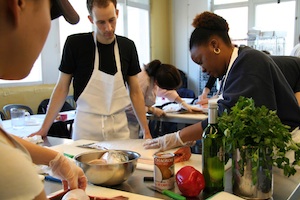 It is generally agreed that you must first master basic cooking techniques and skills before tackling the more advanced lessons. For this, you should consider the Institute of Culinary Education in New York City, which has an extensive selection of recreational cooking classes. At the center of its programs are classes in the Techniques of Fine Cooking, which are especially useful for beginners. Rather than focusing on a particular recipe, the multi-session course helps students master techniques that can be applied to any recipe from fruit to fish.
It is generally agreed that you must first master basic cooking techniques and skills before tackling the more advanced lessons. For this, you should consider the Institute of Culinary Education in New York City, which has an extensive selection of recreational cooking classes. At the center of its programs are classes in the Techniques of Fine Cooking, which are especially useful for beginners. Rather than focusing on a particular recipe, the multi-session course helps students master techniques that can be applied to any recipe from fruit to fish.
During each class, students are introduced to important concepts that will always serve them in the kitchen (such as why things go wrong and what can be done about it when it happens). They are taught major cooking methods like grilling and sautéing, and are given lessons that will provide them with a firm grasp of ingredients and equipment.
To tie all this together into one perfect package, aspiring home cooks might want to take a private class with a talented chef like Michael Salmon at the Hartstone Inn Cooking School in Camden, Maine. In the French tradition, Chef Salmon teaches students privately how to prepare food that is appealing on all levels—from the way it's presented to the way it tastes—using the highest quality ingredients, flavored with organically grown seasonal herbs and vegetables from the garden. Each student taking a private Chef for the Day class will work alongside the chef and his staff, preparing some of the evening's menu at his elegant Victorian Inn.
Although these five programs aren't designed to open the door to professional stardom, they will provide educational and recreational experiences. Under the watchful guidance of respected professionals, you will be introduced to skills and techniques of lasting value.
For diligent, serious-minded students, a cooking class may be all that's necessary to lead to that magical moment in your own kitchen in which you become the culinary star in your family's universe.
SHARPEN YOUR SKILLS
Satisfy your craving for a cooking lesson at any of these culinary schools, all of which offer both chef demonstrations and hands-on classes.
THE HARTSTONE INN COOKING SCHOOL
CAMDEN, ME 41 Elm Street; 207-236-4259
www.hartstoneinn.com
Maximum class size: 4
Class length: 4 hours
Cost: $325 + $50 for each additional person
THE INSTITUTE OF CULINARY EDUCATION
NEW YORK CITY 50 West 23rd St; 212-847-0700
www.iceculinary.com
Maximum class size: 16
Class length: 4-5 hours
Cost: $90-$595
RELISH CULINARY ADVENTURE
HEALDSBURG, CA (69 miles north of San Francisco) 14 Matheson St; 707-431-9999
www.relishculinary.com
Maximum class size: 16 or 36, depending on class
Class length: 3-3.5 hours
Cost: $75-$125
THE FRENCH PASTRY SCHOOL
CHICAGO 226 West Jackson Blvd; 312-726-2419
www.frenchpastryschool.com
Maximum class size: 16
Class length: 5-8 hours
Cost: $525-$1,200 (series of classes)
NEW ORLEANS COOKING EXPERIENCE
NEW ORLEANS 2275 Bayou Rd; 504-945-9104 www.neworleanscooking.experience.com
Maximum class size: 4
Class length: 4 hours
Cost: $325 for one; $50 for each additional person
Chocolate Bouchons
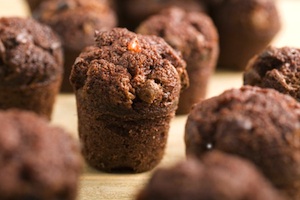 When preparing this recipe, it is important that you always measure your ingredients accurately and avoid making substitutes. It could change the texture and appearance of the bouchon.
When preparing this recipe, it is important that you always measure your ingredients accurately and avoid making substitutes. It could change the texture and appearance of the bouchon.
Ingredients:
½ cup/1 tablespoon Plugra 82% fat Butter
1 cup/1 tablespoon confectionery sugar
½ cup American Almond almond powder
1/3 cup King Arthur pastry flour
1/8 cup Cacao Barry Cocoa powder
3 fresh egg whites
1 tablespoon Apple Compote
Directions:
Prepare beurre noisette by heating the butter in a saucepan until light brown, then strain.
Mix all the dry ingredients together.
Add the egg whites, the apple compote and the strained beurre noisette.
Let mature overnight.
Pipe into cupcake molds and garnish with gianduja cubes, candied orange and cacao nibs.
Bake at 375°F, vent closed for about 8-10 minutes.
Let cool keep in an airtight box or freeze.
Recipe Compliments of The French Pastry School.
Photo Credits:
The French Pastry School and French Recipe : The French Pastry School, Photography by Paul Strabbing
New Orleans Cooking Experience: New Orleans Cooking Experience
Relish: Relish Culinary, LLC
ICE: copyright 2010 by the Institute of Culinary Education, Inc. All rights reserved.
Copyright by Joe David 2010
Joe David is the author of numerous magazine and newspaper articles. This article was published in Go magazine (AirTran Airline’s in-flight magazine). It is from Joe David’s book Gourmet Getaways (Globe Pequot Press, April 2009). For more information, visit www.gourmetgetaways.us
Note: This information was accurate when it was published. Please be sure to confirm all rates and details directly with the businesses in question before making your plans.



